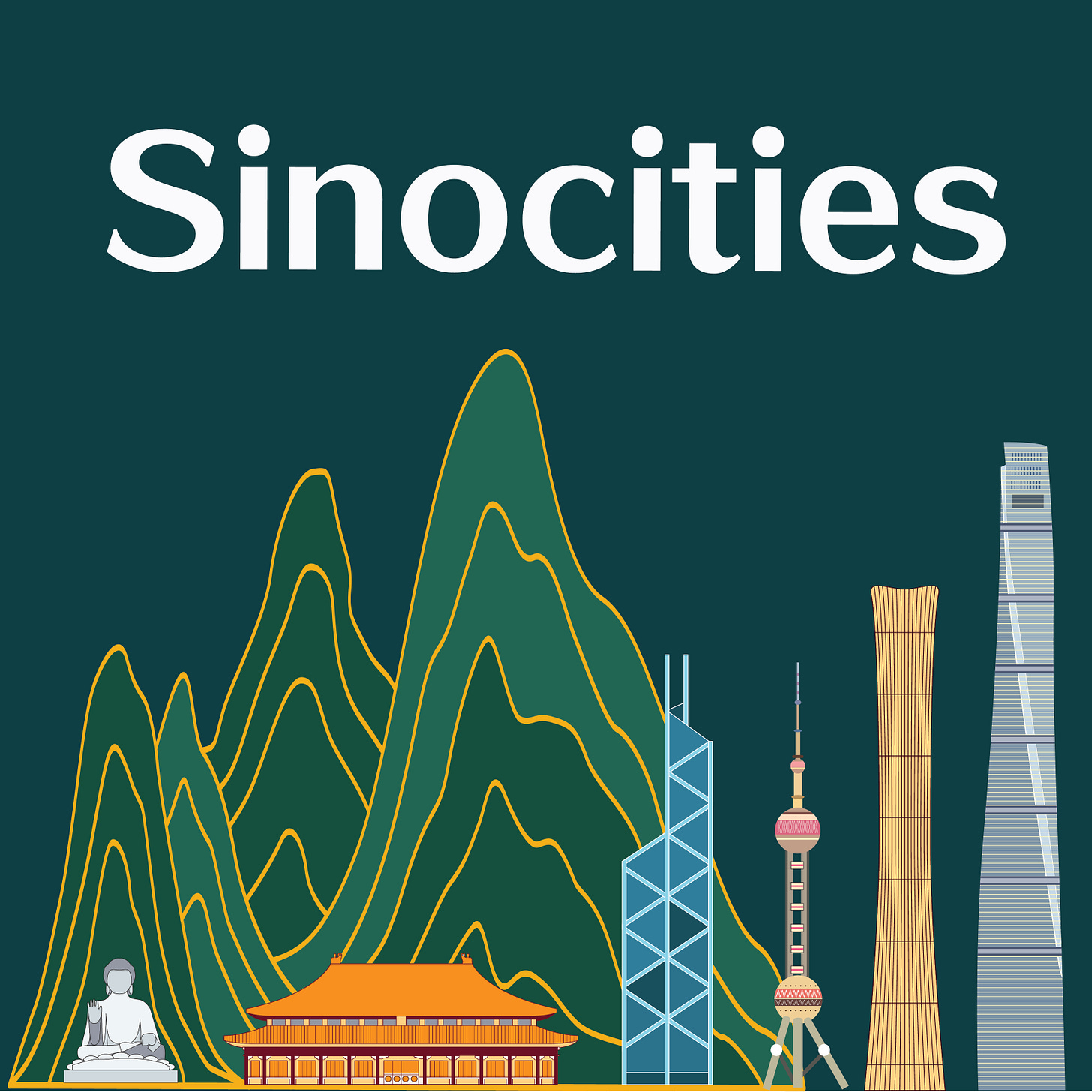China through a Subnational Lens
Sinocities is a substack by Andrew Stokols, (PhD. Political Economy of Urban Development at MIT, research fellow Harvard Kennedy School) exploring the intersection of cities, urban technology, China, architecture & design, and the global and geopolitical implications of China’s urbanization and infrastructure development, both within China and abroad.
In many respects, the story of China’s rapid economic boom is the story of urbanization. Some might think that with the era of slowing growth and sinking real estate market, China’s urbanization story is over. But 35% of the country (477 million people by some measures) remain rural, and there are continued policy efforts to further urbanize the country to reach to reach a percentage of “developed countries” around 80% which is forecasted for 2035.1 No matter how these numbers evolve in the next couple decades (not to mention debates about what these numbers obscure), the role of place and space ( both urban, rural, and areas in between) remains central to understanding China. This includes issues such as local development, land finance, new urban districts and new economic zones, infrastructure, migration, hukou reform, ecological protection (and oh don’t forget, shengtai wenming ‘ecological civilization’). All of these domestic topics remain at the center of the broader “China story” during Xi’s “new era” and have important implications for other aspects of China’s development such as technology policy, economic growth, domestic stability, and international relations.
Furthermore, China is a vast country so any attempt to grapple with its complexity needs to understand regional and local particularities. There’s a lot of good China content in the English speaking world, both from international scholars but also increasingly China-based scholars writing in English. But there’s still very little that focuses on specific locales and specific places as a lens into the complexity and variety of China’s development. This is the niche that Sinocities aims to fill.
Finally, Sinocities will have a China focus but this will not preclude stories and attention on related places if there is a China angle—for example Belt and Road projects abroad, or the impact of Chinese migration and investment in other cities globally. The “Sino” connotes not just “China” but also the broader Sinosphere—East Asia, Southeast Asia and beyond. Of course, this substack should not be confused with the excellent and broader “Sino-themed” substacks out there such as Sinocism and Sinica.
Finally, a word on the logo of Sinocities: the color scheme of green-blue is inspired by a genre of traditional landscape painting known as Qinglü 青绿 that was often used to suggest mythical or historical landscapes2. It features a series of repeating mountain forms and iconic buildings of China ranging from Taihe Dian (the Hall of Supreme Harmony in the Forbidden City) to Shanghai Tower, the tallest building in China—see if you can name the rest. The image was also inspired by lines of a Chinese poem 山外青山楼外楼 (“mountains beyond mountains, buildings beyond buildings) that described the infinite space and wealth of the city of Hangzhou (Lin’an in the southern Song dynasty).
About Andrew
Andrew Stokols is a postdoctoral research fellow and lecturer at MIT’s Department of Urban Studies and Planning. Andrew finished his PhD in Political Economy and Urban Planning at MIT in 2024. His dissertation and current book project Building Digital Cities and Nations asks why and how nations increasingly turned to “smart cities” and the “4th IR” as a strategy for national development in sectors including IoT, 5G, cloud computing, and AI. His research draws on urban studies, political science of late development, and STS to explore the political economy implications of emerging urban technologies and geopolitics of infrastructure in the context of U.S.-China competition. He is also currently working on another monograph analyzing China’s approach to cyber-physical infrastructure, with cases on data regulation data centers, connected vehicles, smart cities, and smart infrastructure. Andrew’s research has been published by Journal of Urban Affairs, Urban Geography, Cambridge Journal of Regions Economies Societies, University of Pennsylvania Press, Environment and Planning A, the Kyoto Review of Southeast Asia. Andrew has been a Fulbright Visiting Research Scholar in China (Xi’an Architecture & Technology University), and before beginning the PhD was Director of Research and Partnerships at the ETH Zürich Future Cities Lab in Singapore, and Director of the Peking University-Harvard Ecological Urbanism Collaboration in Beijing. Andrew holds a master’s degree in urban planning and design from the Harvard School of Design, a Bachelor’s in History and Urban Studies from UC Berkeley. He is fluent in Mandarin, and has training in Korean and Thai.
Why subscribe?
Subscribe to get full access to the newsletter and website for updates on whats happening in China’s cities, urban development and housing policy, infrastructure, and Belt and Road.
Stay up-to-date
You won’t have to worry about missing anything. Every new edition of the newsletter goes directly to your inbox.



